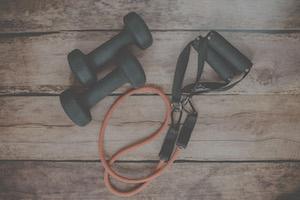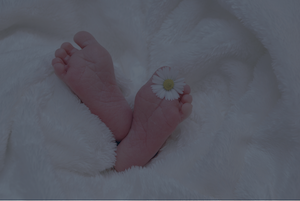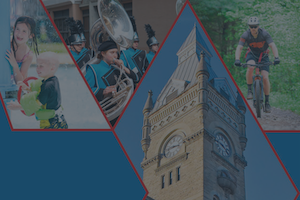Cooper family roots deep in Winfield Township
The Cooper family homestead in Winfield Township dates to the 1810s.
In 1975, Cooper descendant Paul Muder gifted the property to the Butler County Historical Society, which has operated the property as a historic site ever since.
Four generations of Coopers lived in the log home that still stands on the property. Hundreds of Cooper descendants still reside in the area and thousands of people from across the country can trace their roots back to the first Coopers on the land: Samuel and Rebecca.
The story of how the Coopers “took up” land in Western Pennsylvania is an excellent example of how that process worked for most settlers. The history of their children and children’s children parallels that of countless American families.
Through the Treaties of Fort Stanwix (1784) and Fort MacIntosh (1785), the United States annexed lands north and west of the Ohio and Allegheny Rivers that had been occupied by native peoples for centuries. Before the treaties were even drawn up, the Pennsylvania legislature designated wide swathes of the annexed acreage as “Depreciation” lands with which the commonwealth planned to pay Revolutionary War veterans.
As events played out, wealthy eastern speculators acquired much of that land, often from veterans uninterested in moving to the frontier. The speculators either hired surveyors or resold their holdings to men who divided the land into parcels that they resold to individual settlers. So it was that when young Samuel Cooper arrived here in the early 1800s, he purchased 100 acres from a Stephen Lowrey, who had purchased two back country parcels from the estate Robert Morris, former treasurer of the United States.
By law, the “improved” land Lowrey resold to Samuel had to include a shelter consisting of four walls. To encourage settlement and prevent widespread land speculation, the Pennsylvania Settlement Act of 1792 stipulated that to establish ownership a landowner had to improve his properties within a set amount of time by clearing trees and erecting a shelter on each parcel.
In practice, absentee owners just hired men to fell some trees and stack four walls of a cabin to head height on each of their properties. No roof, floor, door, or fireplace required; the walls alone proved intent to build on the land. Letter of the law satisfied, the owner was free to sell improved parcels to settlers who would, in theory, finish clearing the property and building the cabin. (Often those tasks went unfinished after would-be pioneers returned east, moved farther west, or lost their lives.)
As tradition has it, a man named Lumley stacked the log walls on the plot that Samuel Cooper bought from Stephen Lowrey. Samuel added a thatched roof, door, storage/sleeping loft and the fireplace, thus finishing the “Cooper Cabin” that still stands. That might be the case, but there is another possibility.
Backcountry cabins, especially those that started as log walls stacked by hired crews, did not last. Historically, log cabins on the frontier were only meant to provide temporary shelter. Cabin logs were never peeled, hewed square, placed on foundations, or held in place by tightly notched corners. Their chimneys were just tall boxes of stacked wood, and gaps between wall logs were simply stuffed with moss, stones, twigs, and mud.
They were built to shelter the family until they could build a proper log house of squared logs on a foundation, just like the house on the Cooper homestead. It’s possible that soon after Samuel married local girl Rebecca Elliott in 1811, her family helped build the single-pen log house we see today.
Whether or not Cooper Cabin was the original log structure that Samuel bought when he arrived in Butler County, the dwelling that exists now is where generations of Coopers were born, lived, and died.
In 1813, Rebecca gave birth to the first Cooper to be born in Winfield: John Ivan. All told, between 1813 and 1834 eight children — four girls and four boys — entered the world in Sam and Rebecca’s log home. Frustratingly for Cooper descendants trying to trace their roots, the second generation of Coopers tended to marry multiple times and produce an impressive number of children from each union.
Samuel willed each son a portion of land; the eldest, John Ivan, inherited the original homestead and log house. John Ivan married three times and fathered eight children between 1841 and 1861.
In the same period, his siblings also married and added a considerable number of third generation Coopers to the Winfield Township tax rolls. Of that generation, three Cooper cousins — Joshua, Samuel H., and John Ivan’s son Robert — served on the front lines of the Civil War. Their uncle, Samuel S. Cooper, youngest son of Samuel and Rebecca, also fought for the Union.
Robert and his uncle Samuel wrote letters home throughout the war. Those letters, along with Robert’s daybook, are housed in the Butler County Historical Society’s archives and give us great insight into what they experienced. Samuel S. served with the 6th PA Heavy Artillery in northern Virginia and was quite opinionated about Virginia and his experiences there. He wrote:
“January 13, 1865. Well I wouldn’t live in Virginia if they gave me 300 acres of land. Give me Butler County! I can’t write much tonight as light is scarce and I haven’t much time in daylight for we drill two hours in the forenoon on the big guns and the same length in the afternoon on infantry drill and one hour on parade and then answer roll call. So you see how the day is put in here.
“February 19, 1865. Well you can see by my handwriting that I am doing hard work but then it’s like going to school for we have to read and study to be able to handle the heavy artillery and mortars so if we are attacked we can fight. We have to study to find out where to fire and how far away they are and how much powder it will take to carry such a distance and what kind of shell it takes to shoot. … pray for me that my unprofitable life may be spared to see you all again.”
Their prayers must have worked, because Samuel did come home, married twice, had four children, and live to be 76 years old. (1834-1910)
As infantrymen, the three Cooper cousins — Robert, Samuel H. and Jacob — had different experiences than from their uncle, Samuel S. All three served with the 137th PA in Virginia and North Carolina. One of them never made it home, one died 12 days after his return, the third lived a long and full life.
In the spring of 1863, Jacob Cooper died of fever and was buried in Virginia. Robert mentioned his cousin Jacob’s illness several times in his letters:
“February 9, 1863. S.H. Cooper is well but I am sorry to tell you that Jacob is sick. He has been sick for a week now. I ask you to pray with me that the Lord may spare Jacob’s life to return that his affliction may be a blessing.
“February 13, 1863. Jacob is not well but he is better than he was. Spent the day in camp attending to him.
“March 3, 1863. It is snowing and raining and the wind is blowing very hard and it is cold. Jacob has to cough very hard but the doctor says he is past the worst if care is taken.
“March 18, 1863. Now I am sorry to tell you that Jacob … died on the 8th of this month and was buried on the 9th but I hope we will all meet some day never to part again and I hope that if the Lord spares my life I will come home soon and see you face to face again.”
Robert’s life was spared, and he did see his family again. He and Samuel H. mustered out together on June 1, 1863, and traveled from Harrisburg straight back to Butler. Robert must have enjoyed eating meals prepared by his sisters, Maggie and Martha, and playing with his baby half-sister, Nancy Jane. Twelve days later Robert died in the cabin where he was born.
What caused his death is unclear but in letters home Robert mentioned horribly swollen, painful legs and feet that kept him in camp for days. He also joked about the weight he’d put on: over 20 pounds in just a few months. Those symptoms do suggest the possibility that during his service Robert was dying of kidney disease or congestive heart failure.
When Civil War veteran Robert Cooper passed away, his youngest sibling, Nancy Jane, was just a toddler. Of all the Coopers born on the family homestead, little Nancy became the best-known and remains a legendary figure to this day.
Nancy’s mother Lydia was John Ivan’s third wife. When he brought her home to the log house his father built, his teen daughters, Maggie and Martha, were still living there. The house consisted of one large room with a second-floor storage and sleeping space. Maggie, Martha, and their new stepmother put their feet down; John was compelled to build an addition to the house.
The new section had a smaller footprint than the original space but added a first-floor parlor and upstairs bedroom to the home. Still cramped quarters from our perspective, but far more commodious than a single room and loft.
When Nancy Jane Cooper was born in that log house, President Abraham Lincoln had been in office for four months. When Nancy Jane Cooper died in the same house, President John F. Kennedy had been in office for two years.
Between 1861 and 1963, Nancy Jane lived 101 years and six months in a house that never had indoor plumbing and wasn’t wired for electricity until she was an old woman. Nancy Jane married in the 1880s, but not long after her daughter, Alice, was born, she walked 10 miles from Cabot to the Butler County Courthouse and became the first county woman to file for divorce. She cited “desertion” as the reason in her petition.
Ex-husband John Stepp married Nancy’s cousin, Lydia, but Nancy preferred to raise Alice and run her life as she saw fit with no spouse to complicate matters. She had to be — and by all accounts was — an exceptionally independent, tough woman.
Some Cooper descendants became wealthy, some moved far from Butler. The Coopers who occupied the original homestead for generations were farmers, mechanics and soldiers just like thousands of other long-time Butler County families: hard-working, attached to the land and their community.
What makes the Coopers unusual is that the original family homestead has stayed essentially the same for over 200 years. The first Coopers worked in fields where 20th century houses now stand. Nancy tended vegetable, flower, and herb gardens where you see a manicured lawn today.
Over time the cabin was variously covered with boards and tar paper to keep out the cold, was roofed with everything from thatch to shakes to shingles, graced by porches that were added and rebuilt multiple times. But visit the Cooper Cabin Homestead and you’ll see a log house that Samuel and Rebecca Cooper would recognize as the one they built over 200 years ago.
Jennifer Ford is director of the Butler County Historical Society.












